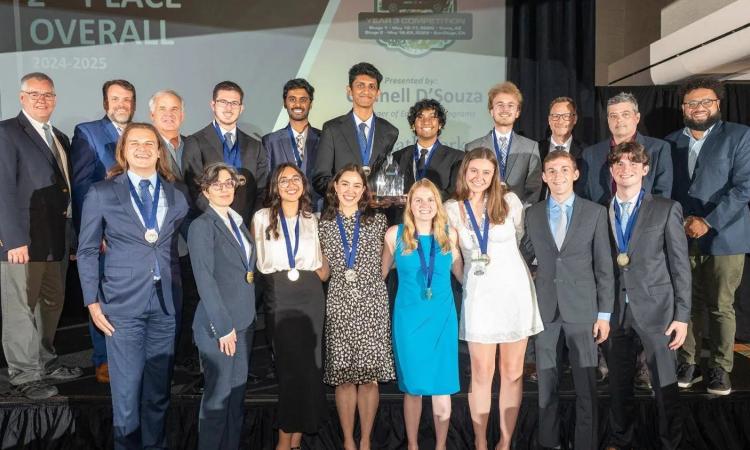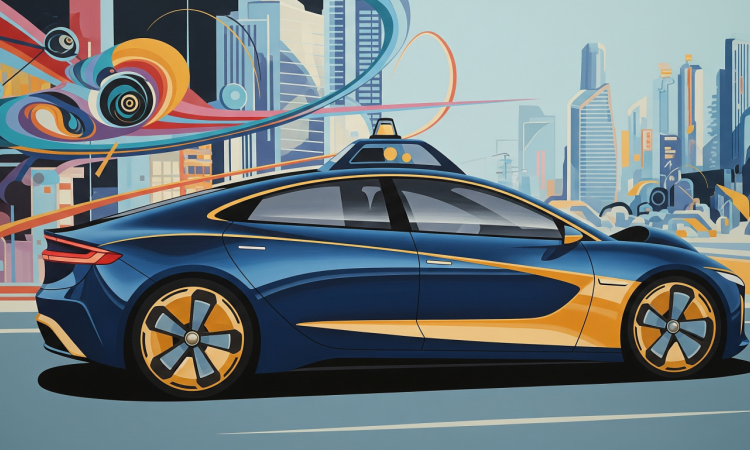After driving 170 miles in their custom-built solar-powered car at the 2025 Electrek Formula Sun Grand Prix, the Georgia Tech Solar Racing team heads into next year looking to go even farther.
(text and background only visible when logged in)
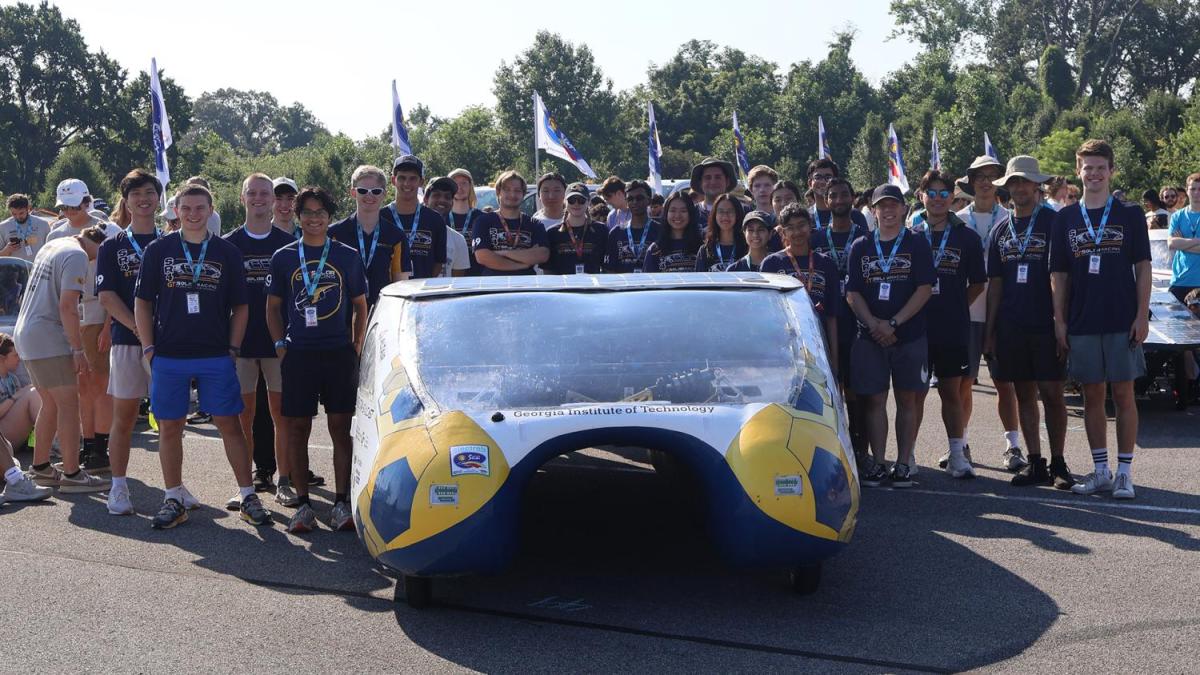
When the Georgia Tech Solar Racing team arrived in Bowling Green, Ky., the mission was simple: drive far and drive fast.
They came to the Bluegrass State over the Fourth of July week for the 2025 Electrek Formula Sun Grand Prix, where teams from over 30 universities around the world gathered to see how far their solar-powered electric cars could drive.
“It was an incredible experience,” electrical lead and third-year electrical engineering student Pranjal Chatterjee said. “Getting our car on a competitive track for the first time after five years of hard work was extremely exciting for all of us.”
This year marked the debut of the Georgia Tech team’s SR-4: Aurora model in a competition. The vehicle was built from scratch over the past year by the interdisciplinary club of over 100 students from the College of Engineering, College of Computing, Scheller College of Business, and more.
Everything from the carbon fiber panels to the solar energy system was custom-built for this moment.
The final product was a street-legal 640 kilogram (approximately 1,411 pounds) car that seats four people and can run for up to eight hours on just solar power.
ECE Takes You There
This story is part of the "ECE Takes You There" summer series highlighting student, faculty, and alumni adventures across the globe! From exciting internships to international travel, discover how the ECE community is exploring, learning, and growing.
The Solar Racing team spent the final months before the competition testing the car around Atlanta, with a handful of students training to drive the advanced machine.
“It takes a lot more cognitive load to drive the solar car,” Advay Pampattiwar, the SR-4 team lead and third-year mechanical engineering student, said. “Our dashboard has a lot more information than RPMs and speed which our drivers need to be trained to read so they know how to troubleshoot if something goes wrong.”
(text and background only visible when logged in)
The custom-built SR-4 model made its competitive debut at the 2025 Formula Sun Grand Prix.
(text and background only visible when logged in)
(text and background only visible when logged in)
Students work on the SR-4 to get it ready for the scrutineering process.
(text and background only visible when logged in)
(text and background only visible when logged in)
A Georgia Tech Solar Car team member prepares to ride in SR-4.
(text and background only visible when logged in)
The competition took place over six days. The team spent three days going through safety and technical inspections, called scrutineering, where judges checked the vehicle to make sure it was safe and ready to race. After that, they spent another three days testing it on the track at the National Corvette Museum Motorsports Park.
“During the three days of scrutineering we watched Corvettes race on the same track we were going to use,” Pampattiwar said. “So, it was cool for us to use our car a few days later and have the same experiences as those machines taking corners and hitting apexes.”
After working through some mechanical issues the first few days, it was finally time to hit the track. The goal was to complete as many laps around the 3.15-mile track as possible. The team that drove the most miles would take home first place.
Ultimately, the Georgia Tech team was able to drive 170 miles, which was good enough for third place. It was an exceptional result for a car that had never been used in a competition before.
“It was really a joy to work with everyone,” Chatterjee said. “We spent some late nights working to ensure we would be able to get on the track. Not every team was able to.”
“On top of seeing our car race for the first time, it was also valuable to see what other teams were working on and the challenges they faced,” Pampattiwar added. “There is a huge amount of knowledge at these competitions as everyone brings their own ideas, so it was a good opportunity to learn from their mistakes and successes.”
The team was happy with how far the car went, but in racing, speed also matters. The SR-4 performed well there too, averaging a speed of 30 mph over the three days, according to Chatterjee.
“I found it really fun when our car passed other cars,” he said. “At one point we passed the car that ended up finishing first. We all cheered very loud for that.”
The team is now preparing for an even bigger upcoming year. On top of planning for their next vehicle, SR-5, they’ll work to take the SR-4 to the next level.
The Formula Sun Grand Prix next summer is a qualifier event for the 2026 Electrek American Solar Challenge (ASC), the main event for the collegiate solar car world.
The top vehicles from the Grand Prix will go from the track to real roads of the ASC for a 1,500-2,000-mile journey across the United States.
And the Georgia Tech team plans on being there.
“This year, we just wanted to see what the car could do in competition,” Pampattiwar said. “Now we know what to change and what we can make better in order to qualify for the cross-country race.”
To learn more about the team, click here. Pictures from the competition are available for viewing on Flickr.
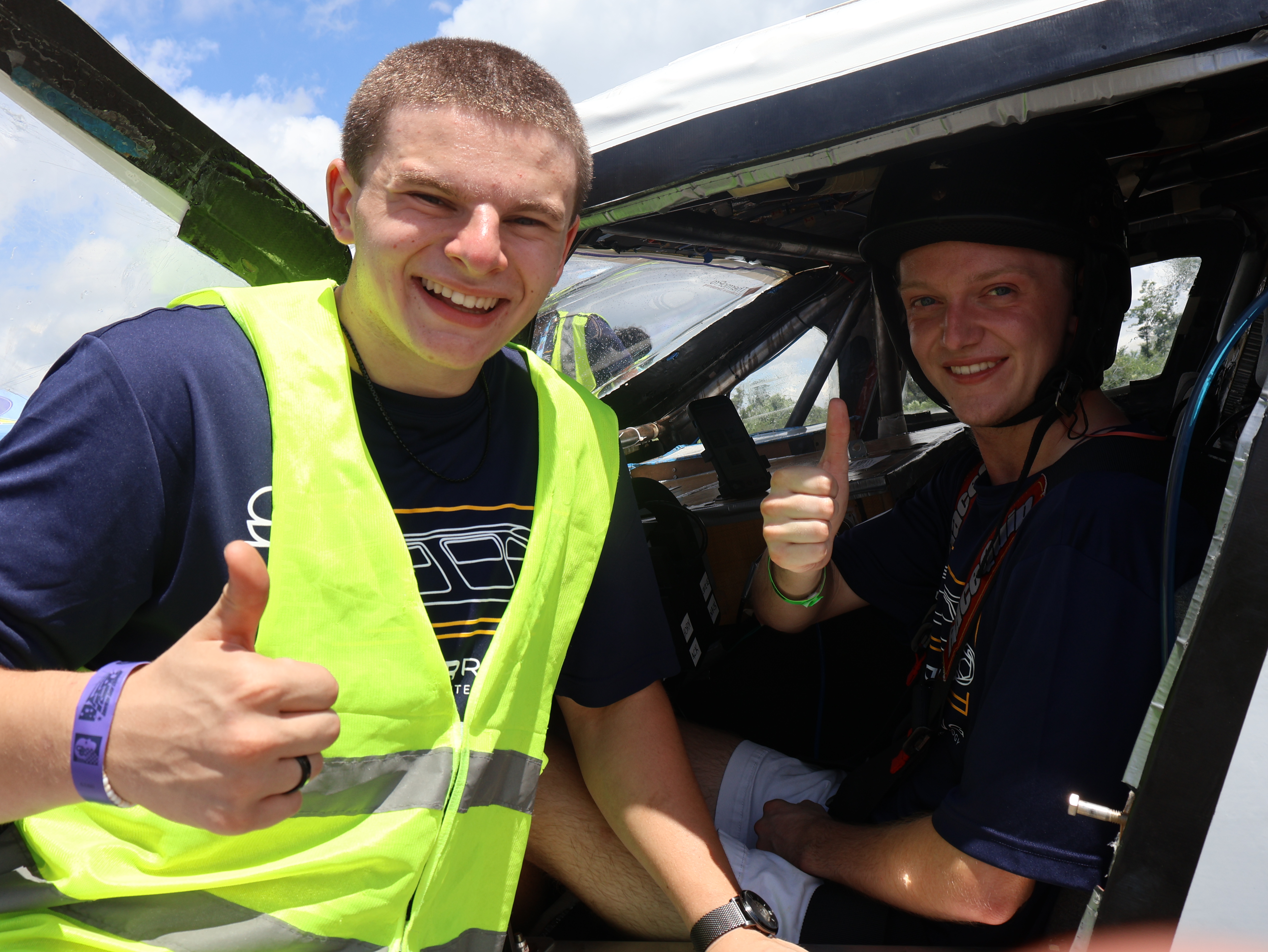
Georgia Tech Solar Car team members prepare to take the car on the track.
(text and background only visible when logged in)
Two Georgia Tech Solar Racing team members work underneath SR-4.
(text and background only visible when logged in)
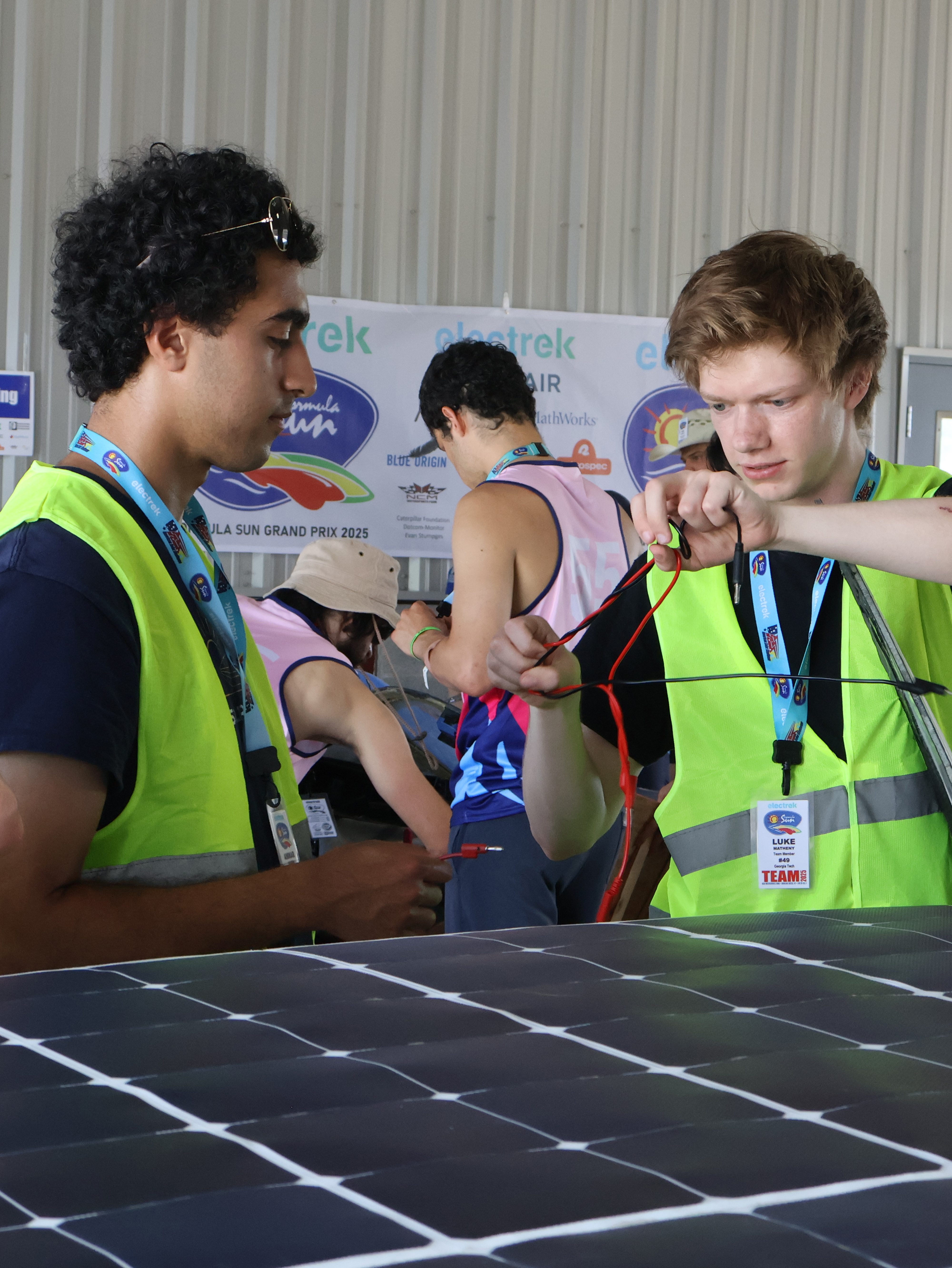
Students work on the wiring inside SR-4 as they prepare for the race.
(text and background only visible when logged in)
(text and background only visible when logged in)
The scrutineering report showing the Georgia Tech Solar Racing team passed every category needed to hit the track at the National Corvette Museum Motorsports Park.
(text and background only visible when logged in)
(text and background only visible when logged in)
A handful of Georgia Tech Solar Racing team members were trained to drive SR-4. While the mechanics of driving are similar to commercial cars, the solar car requires the driver to pay more attention to the data on the dashboard.
(text and background only visible when logged in)
(text and background only visible when logged in)

Students from the Georgia Solar Racing team celebrate at the Forumla Sun Grand Prix.
(text and background only visible when logged in)
Related Content
Strong Year Three Finish Sets Up EcoCAR Team for Final Push
With another second-place finish under their belt, the interdisciplinary club is closing in on the finish line with lessons learned and first place in sight.
Engineering the Car of the Future
ECE experts look to the future of the automotive industry, and how new technology—from innovations in electric motors, wireless charging, autonomous systems, and beyond—will not only transform vehicles, but reshape the power grid, influence policy decisions, and impact numerous aspects of society.

